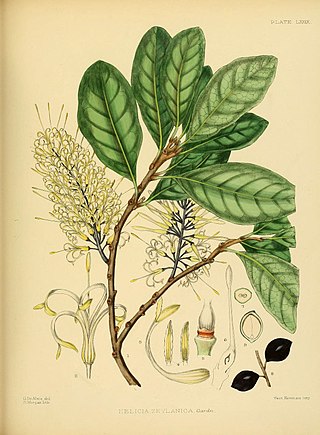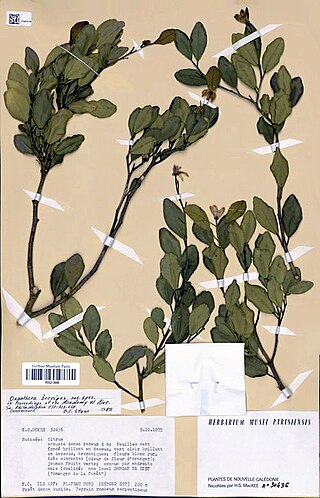
The International Union for Conservation of Nature (IUCN) Red List of Threatened Species, also known as the IUCN Red List or Red Data Book, founded in 1964, is an inventory of the global conservation status and extinction risk of biological species. A series of Regional Red Lists, which assess the risk of extinction to species within a political management unit, are also produced by countries and organizations.

The conservation status of a group of organisms indicates whether the group still exists and how likely the group is to become extinct in the near future. Many factors are taken into account when assessing conservation status: not simply the number of individuals remaining, but the overall increase or decrease in the population over time, breeding success rates, and known threats. Various systems of conservation status are in use at international, multi-country, national and local levels, as well as for consumer use such as sustainable seafood advisory lists and certification. The two international systems are by the International Union for Conservation of Nature (IUCN) and The Convention on International Trade in Endangered Species of Wild Fauna and Flora (CITES).

Carpoxylon macrospermum is a species of palm tree endemic to Vanuatu, and the only species in the genus Carpoxylon.

Satranala decussilvae is a species of flowering plant in the Arecaceae family. It is a palm endemic to Madagascar. It is the only species in the genus Satranala, and is threatened by habitat loss. There are perhaps 200 mature individuals remaining.
Tectiphiala ferox, or palmiste bouglé, is a species of flowering plant in the family Arecaceae. It is endemic to Mauritius.
Alseodaphnopsis rugosa is a species of plant in the family Lauraceae. It is native to southeastern Yunnan province of China and northern Vietnam. It grows in mixed forests in valleys. It is threatened by habitat loss.
Austroblechnum divergens, synonyms including Blechnum divergens, Blechnum rimbachii and Blechnum floresii, is a species of fern in the family Blechnaceae.
Euryodendron is a genus of plant in family Pentaphylacaceae. The genus currently contains a single species, Euryodendron excelsum. It is endemic to China. It is threatened by habitat loss.

Helicia is a genus of 110 species of trees and shrubs, constituting part of the plant family Proteaceae. They grow naturally in rainforests throughout tropical South and Southeast Asia, including India, Sri Lanka, Indochina, Peninsular Malaysia to New Guinea and as far south as New South Wales.
Ilex ternatiflora is an extinct holly in the family Aquifoliaceae. It was endemic to a single location in Las Pozas in Pinar del Río Province, Cuba. It went extinct due to habitat destruction.
Mahonia microphylla is a shrub in the Berberidaceae first described as a species in 1999. It is endemic to Guangxi Province in China.
Mesogyne insignis is a species of flowering plants in the family Moraceae. It is the sole species in genus Mesogyne. It is a tree native to the island of São Tomé in the Gulf of Guinea and to eastern Tanzania.

Oxanthera brevipes is a species of plant in the family Rutaceae. It is endemic to New Caledonia. It was proposed as a novel species by Benjamin C. Stone based on two specimens, distinguished from other false oranges by a non-articulated petiole. The genus Oxanthera has been synonymized with Citrus, but a name in Citrus does not appear to have been published, and Plants of the World Online regards "Oxanthera brevipes" as an unplaced name.
Pitcairnia alexanderi is a species of flowering plant in the family Bromeliaceae, endemic to eastern Ecuador, where it is known from only three subpopulations in Morona-Santiago Province. It grows in Amazonian forest habitat, and it is threatened by deforestation. It was first described by Harry Edward Luther in 1991 as Pepinia alexanderi.
Shorea obtusa, the Siamese sal, is a species of hardwood tree in the family Dipterocarpaceae, native to Southeast Asia.
Pterophylla exigua, formerly known as Weinmannia exigua, is a species of plant in the family Cunoniaceae. It is endemic to Fiji. This scarce shrub or small tree is known from a single population of 30 to 40 individual plants in Cakaudrove Province on Vanua Levu. It grows in forest or thicket at low elevations. Its known habitat is in at high risk of fires.
Zamia macrochiera is a species of plant in the family Zamiaceae. It is endemic to Peru. It is found near the towns of Pebas and Pucaurquillo in Maynas Province, Loreto Region; plants are found near the Rio Amiyacu and Rio Napo. It is threatened by habitat loss, and is considered critically endangered by the IUCN.

Quercus lusitanica, commonly known as gall oak, Lusitanian oak, or dyer's oak, is a species of oak native to Portugal, Spain and Morocco. Quercus lusitanica is the source of commercial nutgalls. These galls are produced by the infection from the insect Cynips gallae tinctoriae. They are used for dyeing.
Bizonula letestui is a species of flowering plant belonging to the family Sapindaceae. It is a tree endemic to Gabon in west-central tropical Africa. It is the sole species in genus Bizonula.

Henonia is a monotypic genus of flowering plants belonging to the family Amaranthaceae. It only contains one species, Henonia scoparia.








